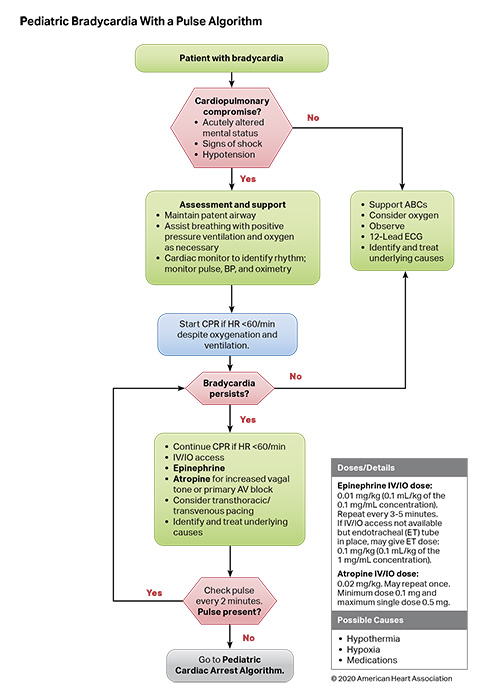2020 updated guidelines have been published by American Heart Association by enrolling in our courses you will receive our ACLS PALS BLS courses that follow 2020 American Heart Association Guidelines for CPR and ECC. The writing group then.
Https Sofia Medicalistes Fr Spip Img Pdf Part 3 Adult Basic And Advanced Life Support 2020 American Heart Association Guidelines For Cardiopulmonary Resuscitation And Emergency Cardiovascular Care Pdf
December 20 2020 Version control.

Cpr algorithm 2020. Our ACLS PALS BLS courses follow 2020 American Heart Association Guidelines for CPR and ECC. 2020 American Heart Association Guidelines for Cardiopulmonary Resuscitation and Emergency Cardiovascular Care. As the Guidelines setting body for Canada and the source of the official resuscitation science and education guidelines used by all Canadian training organizations we are pleased to release the official Heart Stroke 2020 Guidelines for CPR and Emergency Cardiovascular Care ECC and 2020 Guidelines for First Aid online on Wednesday October 21 2020.
2020 Ventricular FibrillationPulseless V-Tach Start Immediate High Quality CPR If un-witnessed code or down time 4 minutes 2 minutes of CPR prior to defibrillation Defibrillate 200j biphasic or device specific dose Continue CPR immediately wo pulse or rhythm check 100-120BPM Epinephrine 1mg Defibrillate. 2020 American Heart Association Verify scene safety. In the 2020 Guidelines.
This algorithm is a summary of the recommended steps when a patient is in cardiac arrest. Provide rescue breathing 1 breath every 2-3 seconds or about 20-30 breathsmin. End the cycles if the scene becomes unsafe or you cannot continue performing CPR due to exhaustion.
The writing group reviewed all relevant and current AHA Guidelines for Cardiopulmonary Resuscitation CPR and ECC and all relevant 2020 ILCOR Consensus on CPR and ECC Science With Treatment Recommendations evidence and recommendations to determine if current guidelines should be reaffirmed revised or retired or if new recommendations were needed. Our CPR algorithms have been created for people without medical training and they cover Adult BLS and the Chain of Survival. The importance of early initiation of CPR by lay rescuers has been re-emphasized.
DosesDetails for the Cardiac arrest algorithm. Continue rescue breathing. Recognizing the need for further clinical research a 2020 ILCOR systematic review recommended against adopting artifact-filtering algorithms for rhythm analysis during CPR at the present time.
The European Resuscitation Council Guidelines for Resuscitation provide specific instructions for how resuscitation should be practiced and take into account ease of teaching and learning as well as the science. Please note that our company typically implements new training guidelines up to a year before AHA releases their updates. 51 The writing group also endorses the need for further investigation and clinical validation before these technologies are adopted into clinical practice.
Assess pulse rate for no more than 10 seconds. Cardiac Arrest Circular Algorithm. If no pulse start CPR.
Major new changes include the following. Oxygenation saturation with pulse oximeter. Therefore the provider must be able to accurately assess and adapt to changing circumstances.
After every 2 minutes of CPR check for a pulse and check the cardiac rhythm. Enhanced algorithms and visual aids provide easy-to- remember guidance for BLS and ACLS resuscitation scenarios. Pinch the patients nose closed.
Keep performing cycles of chest compressions and breathing until the person exhibits signs of life such as breathing an AED becomes available or EMS or a trained medical responder arrives on scene. Move to the Circulation portion of the algorithm Use a barrier device if available. Update algorithm CPR guideline 2020 ดงน 1.
Rescue breathing during CPR with an advanced airway. 2020 American Heart Guidelines Lee Health System CPR Fire Fighters CPR CNA CPR Lee County School system CPR for healthcare providers Emt School CPR CPR for nurses Child CARE worker CPR Pre teacher school CPR Physical therapist cpr Providing CPR training for manufacturing daycare schools foster care parents boyscouts churches small businesses groups individuals corporations First Aid Training Adult AED CPR Training BLS for Healthcare Providers Dental CPR. But regardless of a layperson or professionals training calling 911 is always advisable as is part of the algorithm.
Starting with CPR youll work through the sequence by relying on rhythm checks shocks if VFpVT and drug delivery. Make a seal using your mouth over the mouth of the patient or use a pocket mask or bag mask. The 2020 AHA Guidelines for CPR and ECC reflect the latest global resuscitation science and treatment recommendations derived from the 2020 International Consensus on CPR and ECC with Treatment Recommendations CoSTR.
8-10 breaths per minute 1 breath every 6-8 seconds Chest compressions should be given continuously at a rate of 100 to 120 per minute. Each rescue breath should last approximately 1 second. While ACLS provides algorithms for each of these cardiac arrest rhythms in the real world a patient may move between these rhythms during a single instance of cardiac arrest.
Watch for chest rise. They were developed by Europeans and have been specifically written with European practice in mind. ACLS 2020 ALGORITHM 2.
They have been laid out to help recognize a cardiac arrest and to be able to deliver high-quality CPR along with early defibrillation from an AED. The current 2020 guidance calls for a depth of 2-24 inches 5-6 cm for proper chest compression at 100 to 120 compressions per minute. Check pulse every 2 minutes.
Algorithms for Basic Life Support 2020 Last updated.